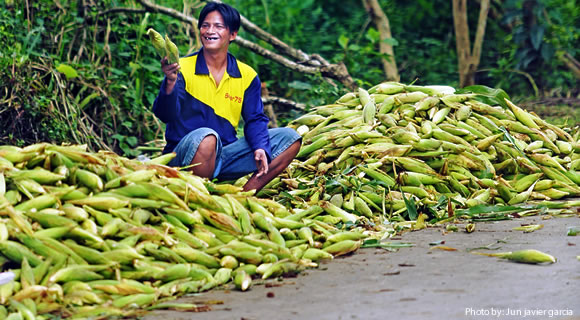In view of this, the Southeast Asian Regional Center for Graduate Study and Research in Agriculture (SEARCA) implemented a study titled “Improving the Corn Insurance Program to Enhance Resilience to Climate Change.” The study analyzed how good agricultural practices (GAP) adoption among corn farmers could be implemented to complement the enhancement of the agricultural insurance system in the Philippines. More specifically, it identified existing and matured GAP technologies related to pest and disease resilience in corn production. It also determined the extent of awareness of farmers about these technologies and analyzed uptake patterns and identified the psychological, socioeconomic and demographic determinants of GAP adoption. Furthermore, it assessed the perception and level of awareness on crop insurance system mechanisms among corn farmers and identified appropriate policy recommendations and intervention measures to improve adoption of GAP and the formulation and effectiveness of agricultural insurance program.
The project was led by Dr. Jose M. Yorobe, Jr., Associate Professor at the Department of Agricultural Economics, College of Economics and Management, University of the Philippines Los Baños (CEM-UPLB). The study sites are the top corn-producing provinces in the country, including Pangasinan, Isabela, and Bukidnon. The study focused on the towns of Alcala and Bayambang in Pangasinan, Cauayan City and Ilagan in Isabela, and Malaybalay City and Don Carlos in Bukidnon. There were 426 corn farmers interviewed—only half of which were insured.
Credit and farmers’ organization have positive and major effects on crop insurance adoption. For instance, the corn crop insurance market grows when it directs its services to borrowing farmers and other members of farmers’ organizations. Lower premiums and a more reliable information on the insurance products also speed up the insurance adoption.
However, with the promotion of good agricultural practices (GAP) the possibility of farmers availing insurance decreases. GAP becomes a substitute for insurance as a risk management tool. Most farmers acknowledge the use of recommended technologies as a scheme to cope with pest, disease damage, and natural calamities.
The presence of moral hazard is also evident considering that corn insurance showed a negative influence on the extent of GAP adoption. The presence of information asymmetry—a condition in which at least some relevant information is known to some but not to all parties involved—causes insurance premiums to increase.Currently farmers are not that affected due to the subsidy given by the government. The subsidy, however, is not sustainable due to the high variability of fund allocation for this purpose. The insurance market is supply driven and highly demand inelastic. To increase the demand for insurance, premium rates need to be greatly reduced.
Policies designed to reduce the premium subsidy of the government and provide resiliency to climate change can strengthen the extent of GAP adoption. With this, farmers tend to be less risk-averse. The corn crop insurance provides a temporary mechanism for farmers to be resilient under erratic environmental conditions while GAP adoption is improved. (Jose M. Yorobe, Jr. and Pilipinas M. Luis)
